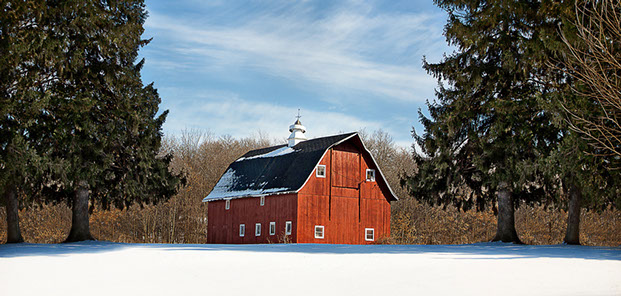Farmlands across North America are dotted with red barns. For many years red has been the cliché color for a barn. But why? What created this tradition of the red barn?
Red has been adopted as the color of choice for barns for centuries not due to its aesthetic appeal but, rather, due to its useful effects and the early adoption of home-made sealants.
Before a time when paint, sealants and other building materials were readily available from the local hardware store, farmers were forced to create their own paint that would seal and protect the wood on their barns.
One of the first substances used as a sealant consisted of a mixture of linseed oil, an orange-colored oil derived from the seeds of the flax plant, milk, lime and ferrous oxide (or rust). Rust was abundant on farms and was very effective as a sealant due to the fact that it would kill any fungi and moss that might grow on the structure. The combination acted as a long-lasting paint that would dry and harden quickly. It was due to the added rust that the mixture was red in color.
In the 1800’s, red paint was inexpensive and continued to be used on barns, as it was discovered that the red helped to absorb sun rays in the winter, keeping the barn warmer.
It has also been suggested that animal blood was combined with milk to act as a staining agent.
Although many viable color and sealant options exist today, red continues to be used as a common barn color due to this age-old tradition.
Image by Earl-Wilkerson



